【报班】大三考研
红包
【考研】专业课HOT
26考研
【MBA】管综备考
【申硕】同等学力
【报录比】查询
计划
【真题】历年考试
计划
【大三】提分宝典
预备
【在职】双证硕士
26考研
【测评】英语|政治
免费
【AI】智能择校
免费
【.zip】资料下载
精
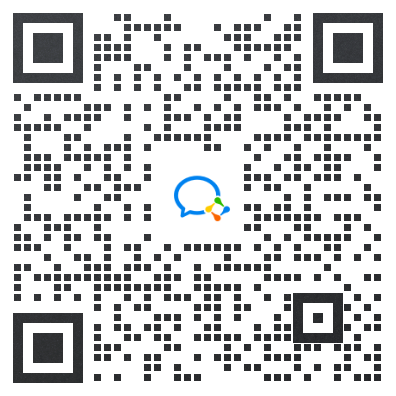
扫码加入训练营
牢记核心词
学习得礼盒
河南工业大学硕士研究生入学考试大纲—《自命题英语》
科目名称:《自命题英语》
科目代码:240
一. 考试目的及要求:
本试卷《自命题英语》 是为以英语为第二外语的学习者参加河南工业大学全日制日语语言文学专业硕士研究生入学考试设计的,旨在测试考生的二外英语综合运用能力,特别是读、写、译等的能力,考试结果为录取相关专业的硕士研究生提供重要参考和依据。
二.考试形式与分值:
本考试要求考生具有良好的英语基本功,较系统的英语基础语法知识,具备 5000 左右的词汇量并掌握常用短语和搭配知识,较强的基础知识综合应用能力、阅读理解能力、英汉互译能力和英语写作能力。
三.考试题型:
《自命题英语》 为日语语言文学硕士研究生入学考试规定科目之一。本考试是选拔性水平考试,难度依据为相关专业本科高级阶段教学大纲有关要求和我校相关专业硕士生培养目标。考试范围包括考生入学应具备的英语词汇语法知识、英语读写译等能力,考查学生运用英语获取并表达信息的综合能力。
四.复习范围及参考书目:
本课程考试属于英语语言水平能力综合测试,因此不提供具体参考书目。考生可参照国内高校通用的《全新版大学英语》综合教程(上海外语教育出版社)兼及时事、政治、经济、文化及社会生活等方面的英文报刊或网站。
五.样题:
河南工业大学
硕士研究生入学考试试题样题
考试科目: 自命题英语 共 页(第 页)
注意:1、本试题纸上不答题,所有答案均写在答题纸上
2、本试题纸必须连同答题纸一起上交。
Section Ⅰ Use of English
Directions:Read the following text. Choose the best word(s)for each numbered blank and mark A, B, C or D on ANSWER SHEET 1.(20 points)
All Sumerian cities recognized a number of gods in common, including the sky god, the lord of storms, and the morning and evening star. __1__the Sumerian worshipped the goddess of fertility, love, and war, she was evidently lower__2__status than the male gods, indicating that in a more urbanized society the__3__that the peoples of previous times had paid to the earth mother goddess had__4__. The gods seemed hopelessly violent and __5__, and one’s life a period of slavery at their easy will. The epic poem the Creation emphasizes that__6__were created to enable the gods to__7__ up working. Each city moreover had its own god, who was considered to__8__ the temple literally and who was in theory the owner of all property within the city. __9__the priests who interpreted the will of the god and controlled the__10__ of the economic produce of the city were favored__11__ their supernatural and material functions __12__. When, after 3,000 B. C., growing warfare among the cities made military leadership__13__, the head of the army who became king assumed a(n)__14__position between the god, whose agent he was, and the priestly class, whom he had both to use and to __15__. Thus king and priests represented the upper class in a hierarchical society. __16__them were the scribes, the secular attendants of the temple, who__17__every aspect of the city’s economic life and who developed a rough judicial system. __18__the temple officials, society was divided among an elite or__19__ group of large landowners and military leaders; a mixed group of merchants, artisans, and craftsmen, free peasants who__20__ the majority of the population; and slaves.
1. [A] Unless [B] As [C] Lest [D] Although
2. [A] on [B] in [C] with [D] about
3. [A] worship [B] reverence [C] admiration [D] gratitude
4. [A] vanished [B] recovered [C] declined [D] attained
5. [A] unpredictable [B] unforgivable [C] unlimited [D] unlikely
6. [A] creatures [B] animals [C] men [D] mortals
7. [A] use [B] turn [C] give [D] back
8. [A] inhabit [B] live [C] reside [D] lodge
9. [A] Hence [B] Thereafter [C] Somehow [D] Incidentally
10. [A] introduction [B] transaction [C] distribution [D] provision
11. [A] as [B] for [C] under [D] of
12. [A] along [B] anyway [C] afterwards [D] alike
13. [A] additional [B] vital [C] singular [D] exceptional
14. [A] alternative [B] secondary [C] intermediate [D] fundamental
15. [A] pacify [B] tempt [C] suppress [D] manipulate
16. [A] Beside [B] Beyond [C] Below [D] Before
17. [A] supervised [B] held [C] managed [D] presided
18. [A] Around [B] Under [C] Above [D] Outside
19. [A] leading [B] noble [C] controlling [D] principal
20. [A] consist [B] compose [C] compile [D] consume
Section II Reading Comprehension
Part A
Directions:
Read the following four Passages. Answer the questions below each passage by choosing A, B, C or D. Mark your answers on ANSWER SHEET 1. (40 points)
Passage 1
According to psychologists(心理学家), an emotion is aroused when a man or animal views something as either bad or good. When a person feels like running away from something he thinks will hurt him, we call this emotion fear. if the person wants to remove the danger by attacking it, we call the emotion anger. The emotions of joy and love are aroused when we think something can help us. An emotion does not have to be created by something in the outside world. it can be created by a person’s thoughts.
Everyone has emotions. Many psychologists believe that infants are born without emotions. They believe children learn emotions just as they learn to read and write. A growing child not only learns his emotions but learns how to act in certain situations because of an emotion.
Psychologists think that there are two types of emotion: positive and negative. Positive emotions include love, liking, joy, delight, and hope. They are aroused by something that appeals to a person. Negative emotions make a person unhappy or dissatisfied. They include anger, fear, despair, sadness, and disgust. in growing up, a person learns to cope with the negative emotions in order to be happy. Emotions may be weak or strong. Some strong emotions are so unpleasant that a person will try any means to escape from them. in order to feel happy, the person may choose unusual ways to avoid the emotion.
Strong emotions can make it hard to think and to solve problems. They may prevent a person from learning or paying attention to what he is doing. For example, a student taking an examination may be so worried about failing that he cannot think properly. The worry drains valuable mental energy he needs for the examination.
21. We learn from the passage that an emotion is created by something _____.
A) one thinks bad or good
B) one feels in danger
C) one faces in the outside world
D) one tries to escape from real life
22. Which of the following is NOT true?
A) Children learn emotions as they grow up.
B) Babies are born with emotions.
C) Emotions fall into two types in general.
D) People can cope with the negative emotions in life.
23. The author’s purpose of writing this passage is to____.
A) explain why people have emotions
B) show how people avoid the negative emotions
C) explain what people should do before emotions
D) define and classify people’s emotions
24. We can safely conclude that a student may fail in an exam if____.
A) he cannot think properly
B) he can’t pay attention to it
C) he can’t pay attention to it
D) he is not full of energy
25. As used in the last sentence, the word drains means____.
A) stops B) ties C) weakens D) flows gradually
Passage 2
At 18, Ashanthi DeSilva of suburban Cleveland is a living symbol of one of the great intellectual achievements of the 20th century. Born with an extremely rare and usually fatal disorder that left her without a functioning immune system (the “bubble-boy disease,” named after an earlier victim who was kept alive for years in a sterile plastic tent), she was treated beginning in 1990 with a revolutionary new therapy that sought to correct the defect at its very source, in the genes of her white blood cells. It worked. Although her last gene-therapy treatment was in 1992, she is completely healthy with normal immune function, according to one of the doctors who treated her, W. French Anderson of the University of Southern California. Researchers have long dreamed of treating diseases from hemophilia to cancer by replacing mutant genes with normal ones. And the dreaming may continue for decades more. “There will be a gene-based treatment for essentially every disease,” Anderson says, “within 50 years.”
It’s not entirely clear why medicine has been so slow to build on Anderson’s early success. The National Institutes of Health budget office estimates it will spend $432 million on gene-therapy research in 2005, and there is no shortage of promising leads. The therapeutic genes are usually delivered through viruses that don’t cause human disease. “The virus is sort of like a Trojan horse,” says Ronald Crystal of New York Presbyterian/Weill Cornell Medical College. “The cargo is the gene.”
At the University of Pennsylvania’s Abramson Cancer Center, immunologist Carl June recently treated HIV patients with a gene intended to help their cells resist the infection. At Cornell University, researchers are pursuing gene-based therapies for Parkinson’s disease and a rare hereditary disorder that destroys children’s brain cells. At Stanford University and the Children’s Hospital of Philadelphia, researchers are trying to figure out how to help patients with hemophilia who today must inject themselves with expensive clotting drugs for life. Animal experiments have shown great promise.
But somehow, things get lost in the translation from laboratory to patient. In human trials of the hemophilia treatment, patients show a response at first, but it fades over time. And the field has still not recovered from the setback it suffered in 1999, when Jesse Gelsinger, an 18-year-old with a rare metabolic disorder, died after receiving an experimental gene therapy at the University of Pennsylvania. Some experts worry that the field will be tarnished further if the next people to benefit are not patients but athletes seeking an edge. This summer, researchers at the Salk Institute in San Diego said they had created a “marathon mouse” by implanting a gene that enhances running ability; already, officials at the World Anti-Doping Agency are preparing to test athletes for signs of “gene doping.” But the principle is the same, whether you’re trying to help a healthy runner run faster or allow a muscular-dystrophy patient to walk. “Everybody recognizes that gene therapy is a very good idea,” says Crystal. “And eventually it’s going to work.”
26. The case of Ashanthi Desilva is mentioned in the passage to ____________.
[A] show the promise of gene-therapy
[B] give an example of modern treatment for fatal diseases
[C] introduce the achievement of Anderson and his team
[D] explain how gene-based treatment works
27. Anderson’s early success has ________________.
[A] greatly speeded the development of medicine
[B] brought no immediate progress in the research of gene-therapy
[C] promised a cure to every disease
[D] made him a national hero
28. Which of the following is true according to the passage?
[A] Ashanthi needs to receive gene-therapy treatment constantly.
[B] Despite the huge funding, gene researches have shown few promises.
[C] Therapeutic genes are carried by harmless viruses.
[D] Gene-doping is encouraged by world agencies to help athletes get better scores.
29. The word “tarnish” (line 5, paragraph 4) most probably means ____________.
[A] affect [B] warn [C] trouble [D] stain
30. From the passage we can see that the author seems ___________.
[A] optimistic [B] pessimistic [C] troubled [D] uncertain
Passage 3
The purpose of an interview is to find out if your goals and the goals of an organization are compatible. Other goals of the interview are: to answer questions successfully, obtain any additional information needed to make a decision, accent your special strengths, establish a positive relationship, show confidence, and to sell yourself. Based on these goals, place yourself in the role of the interviewer and develop anticipated questions and answers to three categories: company data, personal data, and specific job data. You also develop questions which you will ask to determine how well your career goals match the needs of the organization. These questions include both those you would ask before a job offer and those you would ask after a job offer.
Prior to the interview,acquaint yourself with the laws pertaining to job discrimination. This knowledge will enhance your chances of being considered on an equal standing with other applicants.
To develop confidence, adequately prepare for the interview. Focus on how you can best serve the organization to which you are applying. Then rehearse until the rough edges are smoothed and you sound convincing to those with whom you have practiced.
Since the interview will center on you, proper self-management process is divided into four stages: the before stage, the greeting stage, the consultation stage, and the departure stage. The before stage includes writing a confirmation letter, concentrating on appearance and nonverbal communication, developing your portfolio, anticipating questions with positive responses, and arriving early. The greeting stage includes greeting everyone courteously, using waiting-room smarts, using your time wisely, and applying proper protocol when meeting the interviewer. The consultation stage includes responsiveness and enthusiasm, knowing when to interject key points, showing sincerity, highlighting your strengths, and listening intently. The departure stage includes leaving on a positive note, expressing appreciation, expressing interest, leaving promptly, and making notes immediately after departure.
To save time and money and offer convenience to prospective employees and employers, videotaping and satellite videophones may become a common method of interviewing. Being at ease in front of a camera would be important for these types of interviews.
Following the interview, write thank-you letters to each person who interviewed you and to those who helped you get the interview. When invited for a second interview, go prepared by using your notes and feedback from the interview to zero in on what the company wants. If the company doesn’t respond in two weeks, call back or write a follow-up letter. You may get turned down. If so, try to find out why as a means of self-improvement.
Following a job offer, take a few days to consider all elements and then call or write a letter either accepting or declining the offer —whichever is appropriate. If you accept and you are presently employed, write an effective letter of resignation, departing on a positive note.
31. The word “compatible” in the first sentence probably means____.
[A] in agreement [B] in conflict [C] complementary [D] practicable
32. The writer advises you to familiarize yourself with the laws concerning job discrimination so that ____.
[A] you can show your prospective employer you have a wide range of knowledge
[B] you stand on equal chance of being hired with other applicants to the job
[C] you will refuse to give answers to any questions against the current laws
[D] you know how to behave within the limit of laws at the interview
33. At which stage should you emphasize your qualifications for the job?
[A] The before stage.
[B] The greeting stage.
[C] The consultation stage.
[D] The departure stage.
34. If you are given a second interview, it is most important for you to____.
[A] write a thank-you letter to each person who interviewed you last time
[B] find out exactly what the company wants of you
[C] learn from the last interview and improve yourself
[D] consider all the elements that are important for the job
35. The passage is mainly concerned with____.
[A] how to manage an interview
[B] how to apply for a job vacancy
[C] how an applicant should behave during an interview
[D] how to make your private goal compatible with those of an organization
Passage 4
When you think of the tremendous technological progress we have made, it’s amazing how little we have developed in other respects. We may speak contemptuously of the poor old Romans because they relished the orgies of slaughter that went on in their arenas. We may despise them because they mistook these goings on for entertainment. We may forgive them condescendingly because they lived 2000 years ago and obviously knew no better. But are our feelings of superiority really justified? Are we any less blood-thirsty? Why do boxing matches, for instance, attract such universal interest? Don’t the spectators who attend them hope they will see some violence? Human beings remains as bloodthirsty as ever they were. The only difference between ourselves and the Romans is that while they were honest enough to admit that they enjoyed watching hungry lions tearing people apart and eating them alive, we find all sorts of sophisticated arguments to defend sports which should have been banned long age; sports which are quite as barbarous as, say, public hangings or bearbaiting.
It really is incredible that in this day and age we should still allow hunting or bull-fighting, that we should be prepared to sit back and watch two men batter each other to pulp in a boxing ring, that we should be relatively unmoved by the sight of one or a number of racing cars crashing and bursting into flames. Let us not deceive ourselves. Any talk of ‘the sporting spirit’ is sheer hypocrisy. People take part in violent sports because of the high rewards they bring. Spectators are willing to pay vast sums of money to see violence. A world heavyweight championship match, for instance, is front page news. Millions of people are disappointed if a big fight is over in two rounds instead of fifteen. They feel disappointment because they have been deprived of the exquisite pleasure of witnessing prolonged torture and violence.
Why should we ban violent sports if people enjoy them so much? You may well ask. The answer is simple: they are uncivilized. For centuries man has been trying to improve himself spiritually and emotionally - admittedly with little success. But at least we no longer tolerate the sight madmen cooped up in cages, or public floggings of any of the countless other barbaric practices which were common in the past. Prisons are no longer the grim forbidding places they used to be. Social welfare systems are in operation in many parts of the world. Big efforts are being made to distribute wealth fairly. These changes have come about not because human beings have suddenly and unaccountably improved, but because positive steps were taken to change the law. The law is the biggest instrument of social change that we have and it may exert great civilizing influence. If we banned dangerous and violent sports, we would be moving one step further to improving mankind. We would recognize that violence is degrading and unworthy of human beings.
36. It can be inferred from the passage that the author’s opinion of nowadays, human beings is____.
[A] not very high [B] high [C] contemptuous [D] critical
37. The main idea of this passage is____.
[A] vicious and dangerous sports should be banned by law
[B] people are willing to pay vast sums money to see violence
[C] to compare two different attitudes towards dangerous sports
[D] people are bloodthirsty in sports
38. That the author mentions the old Romans is____.
[A] To compare the old Romans with today’s people
[B] to give an example
[C] to show human beings in the past know nothing better
[D] to indicate human beings are used to bloodthirsty
39. How many dangerous sports does the author mention in this passage?
[A] Three. [B] Five. [C] Six. [D] Seven.
40. The purpose of the author in writing this passage is____.
[A] that, by banning the violent sports, we human beings can improve our selves
[B] that, by banning the dangerous sports, we can improve the law.
[C] that we must take positive steps to improve social welfare system.
[D] to show law is the main instrument of social change
Part B
Directions:Read the following passage and answer the questions by choosing the most suitable subheading from the list A-G for each numbered paragraph (41-45). There are two extra subheadings which you do not need to use. Make your answers on the ANSWER SHEET. (10 points)
Like most people, you probably got your vaccinations as a child and, since then, you’ve had tetanus (破伤风) boosters, maybe some flu shots, and some antibiotics when you needed them. When you catch a germ, you usually recover quickly. Most people in the United States and other developed countries have good reason to feel smug. They are well protected against infectious disease by vaccination, antibiotics, good hygiene, and general good health.
41) ___________. In addition, diseases that just a few years ago seemed to be nearly wiped out often make worrisome comebacks despite widespread vaccination. Resistant strains of infections frequently appear.
42) ___________.
What is the status of infectious disease in the 21st century? Wasn’t modern medicine supposed to have this under control by now with vaccines, antibiotics, and antiviral drugs? Are the news reports and alarming headlines about new and emerging disease to be believed? Will resistant strains of disease overpower our ability to develop new drugs and vaccines? Is the landscape of infectious disease changing in the 21st century, and if so, how can medical science meet the new challenges?
43) __________. As Cedric Mims described it in Mims’ Pathogenesis(病发机理) of Disease, “If none of the microorganisms associated with man did any damage and none was notably beneficial, they would be interesting but relatively unimportant objects. In fact, they have been responsible for the great pestilences (瘟疫) of history, and have at times determined the course of history.”
44) ___________. Take, for example, the settlement of North America by Europeans. The smallpox virus and other diseases carried by Europeans played at least as great a role in wiping out the indigenous American populations as did war and weapons. The conquest of Aztecs in Mexico by Hernando Cortes in 1520, for example, was accomplished less by the use of weapons than by the inadvertent introduction of the smallpox virus, endemic in Europe but completely new to the Aztec people, who had no immunity and fell ill and died at a staggering rate. Two years after Cortez arrived, 3.5 million native Americans were dead of smallpox.
45) __________. Because of their rapid rate of evolution and the constantly changing circumstances of human life, they continue to present threats of future pestilences.
The age-old story does, however, take some new twists in the 21st century. Several conditions of the modern world combine to influence the threat of infectious disease today.
[A] Infectious disease in general and viruses in particular, have indeed, shaped history.
[B] In most cases, microorganisms live in harmony with their hosts. Such is the case for many tropical viruses and the insects, monkeys, or other animals in which they have lived and reproduced.
[C] Still more alarming are the “new and emerging” diseases reported in the news, like SARS or bird flu, for which we have little or no immunity. And sexually transmitted diseases continue to pose a major health threat, with HIV at the top of the list.
[D] But for people whose immune systems are weakened by age or disease, it’s a different story. There are plenty of infectious microbes looking for a place to multiply and cause illness and sometimes death.
[E] Despite such gloomy visions of possible world crises, many scientists remain optimistic that vaccines will eventually improve.
[F] The battle of human versus microbe is far from over and is never likely to be so.
[G] The tug-of-war between human and microbes has always taken place. It is the nature of infectious microbes to damage and kill their hosts.
Section III Translation
46. Directions:
Translate the following text from English into Chinese. Write your translation on ANSWER SHEET 2. (15 points)
For people wary of abstract theorizing, it’s nice to see people investigating morality in ways that are concrete and empirical. But their approach does have certain implicit tendencies. They emphasize group cohesion over individual dissent. They emphasize the cooperative virtues, like empathy, over the competitive virtues, like the thirst for recognition and superiority. At this conference, they barely mentioned the yearning for transcendence and the scared, which plays such a major role in every human society.
Their implied description of the moral life is gentle, fair and grounded. But it is all lower case. So far, at least, it might not satisfy those who want their morality to be awesome, formidable, transcendent or great.
47. Directions:
Write an essay based on the following chart. In your writing, you should
(1) interpret the picture, and
(2) give your comment.
You should write about 150 words on the ANSWER SHEET. (15 points)
本文关键字: 自命题考研大纲
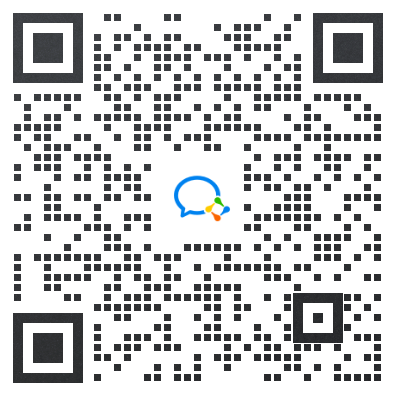
 资料下载
资料下载
2014年-2024年考研历年真题汇总
发布时间:2024-04-25扫码添加【考研班主任】
即可领取资料包
考研大纲PDF电子版下载-历年(附解析)
发布时间:2024-04-25扫码添加【考研班主任】
即可领取资料包
2025年考研政数英备考资料zip压缩包
发布时间:2024-04-25扫码添加【考研班主任】
即可领取资料包
考研英语大纲词汇5500打印版(基础必备)
发布时间:2024-04-25扫码添加【考研班主任】
即可领取资料包
新东方在线考试模拟题【12套】
发布时间:2024-04-25扫码添加【考研班主任】
即可领取资料包
2025年考研专业课知识点总结
发布时间:2024-04-25扫码添加【考研班主任】
即可领取资料包
新东方考研资料下载地址
发布时间:2023-05-17新东方在线考研资料合集
下载方式:微信扫码,获取网盘链接
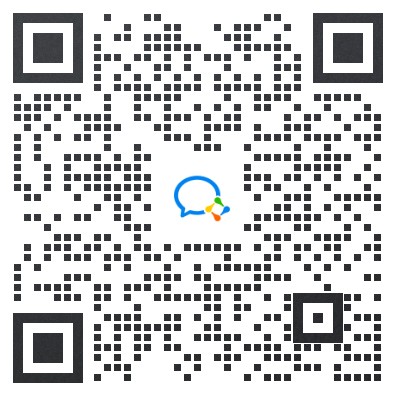
目录:
1.2013-2023年近10年政数英真题及解析PDF版(新东方)
2.2013-2023年专业课考试历年真题及解析PDF版
3.24考研复习备考资料大合集:大纲+备考资料+词汇书+考前押题+自命题
资料介绍:
1.2013-2023年近10年政数英真题及解析PDF版(新东方)
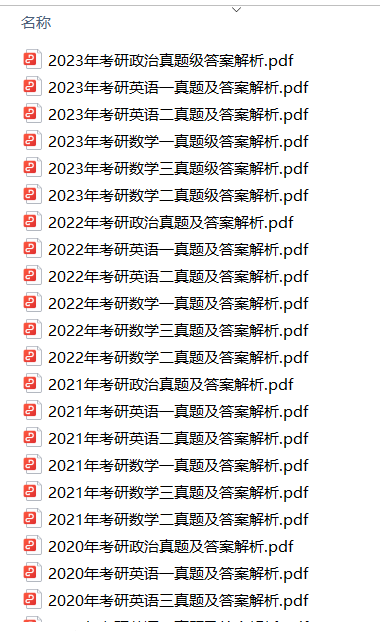 、
、
2.2013-2023年专业课考试历年真题及解析PDF版


3.24考研复习备考资料大合集
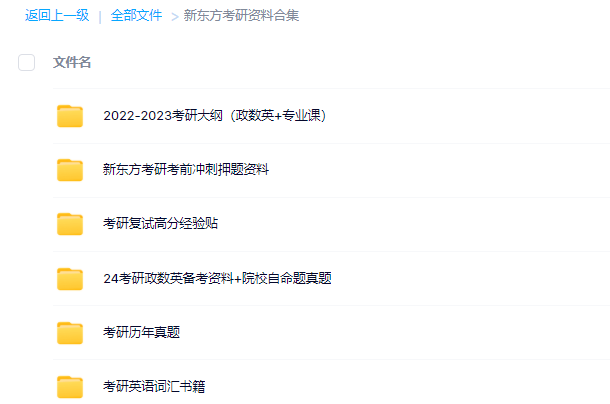
3.24考研复习备考资料:考研大纲
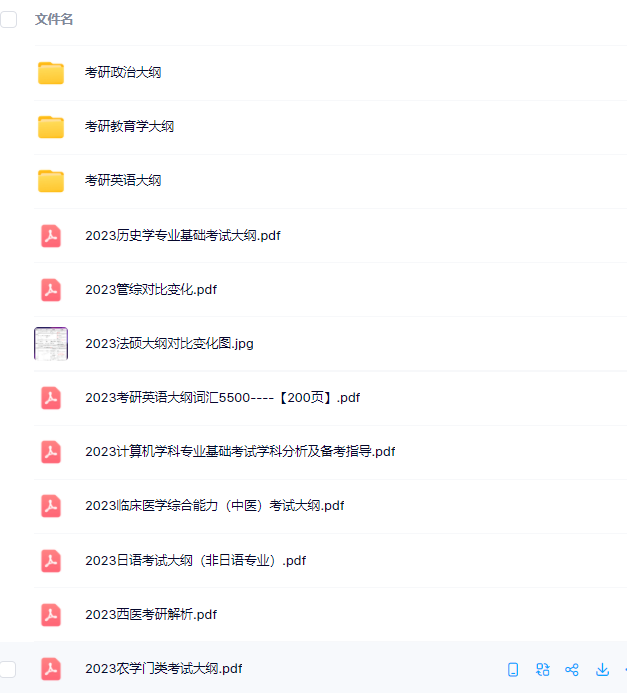
3.24考研复习备考资料:政数英备考资料+自命题真题

------------------
考研备考过程中,尤其是专业课部分,参考往年的考试真题,对于我们的复习有更好的帮助。北京大学考研真题资料都有哪些?小编为大家进行了汇总。
北京大学考研真题资料-公共课
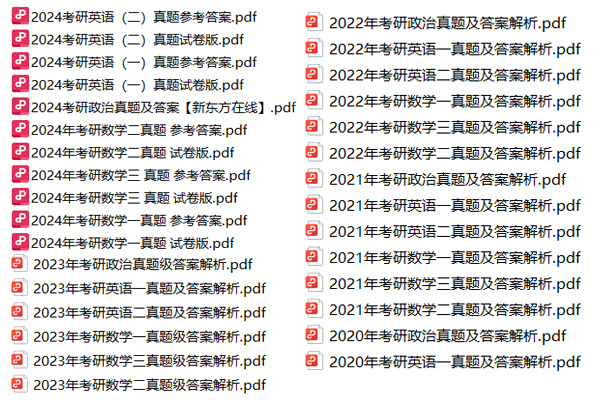
北京大学考研真题资料-专业课


以上就是关于“北京大学考研真题资料下载(历年汇总)”的整理,更多考研资料下载,请关注微信获取下载地址。
2024考研公共课必背知识点汇总
发布时间:2023-01-03扫码添加【考研班主任】
即可领取资料包
2013-2023考研历年真题汇总
发布时间:2023-01-03扫码添加【考研班主任】
即可领取资料包
考研英语大纲词汇(PDF可打印)
发布时间:2023-01-03扫码添加【考研班主任】
即可领取资料包
2024考研专业课知识点总结
发布时间:2023-01-03扫码添加【考研班主任】
即可领取资料包
2023考研政治 内部押题 PDF
发布时间:2022-11-16扫码添加【考研班主任】
即可领取资料包
徐涛:23考研预测六套卷
发布时间:2022-11-16扫码添加【考研班主任】
即可领取资料包
考研政数英冲刺资料最新整理
发布时间:2022-11-16扫码添加【考研班主任】
即可领取资料包
23考研答题卡模板打印版
发布时间:2022-11-16扫码添加【考研班主任】
即可领取资料包
2023考研大纲词汇5500PDF电子版
发布时间:2022-07-28扫码添加【考研班主任】
即可领取资料包
考研历年真题(公共课+专业课)
发布时间:2022-07-28扫码添加【考研班主任】
即可领取资料包
考研英语阅读100篇附解析及答案
发布时间:2022-01-07扫码添加【考研班主任】
即可领取资料包
新东方考研学霸笔记整理(打印版)
发布时间:2022-01-07扫码添加【考研班主任】
即可领取资料包
2001-2021年考研英语真题答案(可打印版)
发布时间:2022-01-07扫码添加【考研班主任】
即可领取资料包
考研英语词汇5500(完整版下载)
发布时间:2022-01-07扫码添加【考研班主任】
即可领取资料包
2022考研政审表模板精选10套
发布时间:2022-01-07扫码添加【考研班主任】
即可领取资料包
历年考研真题及答案 下载
发布时间:2021-12-09扫码添加【考研班主任】
即可领取资料包
考研政审表模板汇总
发布时间:2020-06-17扫码添加【考研班主任】
即可领取资料包
近5年考研英语真题汇总
发布时间:2020-06-17扫码添加【考研班主任】
即可领取资料包
考研英语大纲词汇5500
发布时间:2020-06-17扫码添加【考研班主任】
即可领取资料包
2022考研12大学科专业排名汇总
发布时间:2019-11-21扫码添加【考研班主任】
即可领取资料包
2023考研政治复习备考资料【珍藏版】
发布时间:2019-11-21扫码添加【考研班主任】
即可领取资料包
考研英语万能模板+必备词汇+范文
发布时间:2019-11-21扫码添加【考研班主任】
即可领取资料包
考研数学一、二、三历年真题整理
发布时间:2019-11-21扫码添加【考研班主任】
即可领取资料包

添加班主任领资料
添加考研班主任
免费领取考研历年真题等复习干货资料
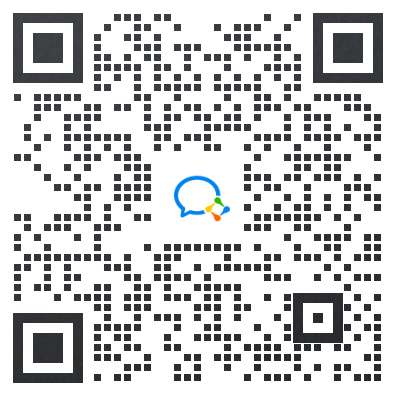
 推荐阅读
推荐阅读
2024年青海大学考研大纲已经公布,以下是具体内容,供大家参考,祝大家备考顺利,成功上岸! 随着各大考研院校招简和专业目录
2024天津理工大学考研大纲已经公布,以下是具体内容,供大家参考,祝大家备考顺利,成功上岸! 随着各大考研院校招简和专业目
2024年湖北师范大学考研大纲已经公布,以下是具体内容,供大家参考,祝大家备考顺利,成功上岸! 随着各大考研院校招简和专业
2024外交学院考研大纲已经公布,以下是具体内容,供大家参考,祝大家备考顺利,成功上岸! 随着各大考研院校招简和专业目录的
2024年西安邮电大学考研大纲已经公布,以下是具体内容,供大家参考,祝大家备考顺利,成功上岸! 随着各大考研院校招简和专业

 资料下载
资料下载
扫码添加【考研班主任】
即可领取资料包
扫码添加【考研班主任】
即可领取资料包
扫码添加【考研班主任】
即可领取资料包
扫码添加【考研班主任】
即可领取资料包
扫码添加【考研班主任】
即可领取资料包
扫码添加【考研班主任】
即可领取资料包
新东方在线考研资料合集
下载方式:微信扫码,获取网盘链接

目录:
1.2013-2023年近10年政数英真题及解析PDF版(新东方)
2.2013-2023年专业课考试历年真题及解析PDF版
3.24考研复习备考资料大合集:大纲+备考资料+词汇书+考前押题+自命题
资料介绍:
1.2013-2023年近10年政数英真题及解析PDF版(新东方)
 、
、
2.2013-2023年专业课考试历年真题及解析PDF版


3.24考研复习备考资料大合集

3.24考研复习备考资料:考研大纲

3.24考研复习备考资料:政数英备考资料+自命题真题

------------------
考研备考过程中,尤其是专业课部分,参考往年的考试真题,对于我们的复习有更好的帮助。北京大学考研真题资料都有哪些?小编为大家进行了汇总。
北京大学考研真题资料-公共课

北京大学考研真题资料-专业课


以上就是关于“北京大学考研真题资料下载(历年汇总)”的整理,更多考研资料下载,请关注微信获取下载地址。
扫码添加【考研班主任】
即可领取资料包
扫码添加【考研班主任】
即可领取资料包
扫码添加【考研班主任】
即可领取资料包
扫码添加【考研班主任】
即可领取资料包
扫码添加【考研班主任】
即可领取资料包
扫码添加【考研班主任】
即可领取资料包
扫码添加【考研班主任】
即可领取资料包
扫码添加【考研班主任】
即可领取资料包
扫码添加【考研班主任】
即可领取资料包
扫码添加【考研班主任】
即可领取资料包
扫码添加【考研班主任】
即可领取资料包
扫码添加【考研班主任】
即可领取资料包
扫码添加【考研班主任】
即可领取资料包
扫码添加【考研班主任】
即可领取资料包
扫码添加【考研班主任】
即可领取资料包
扫码添加【考研班主任】
即可领取资料包
扫码添加【考研班主任】
即可领取资料包
扫码添加【考研班主任】
即可领取资料包
扫码添加【考研班主任】
即可领取资料包
扫码添加【考研班主任】
即可领取资料包
扫码添加【考研班主任】
即可领取资料包
扫码添加【考研班主任】
即可领取资料包
扫码添加【考研班主任】
即可领取资料包

 阅读排行榜
阅读排行榜
 相关内容
相关内容